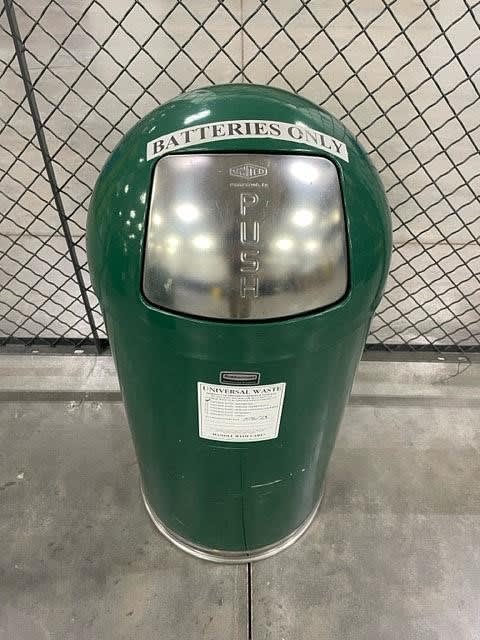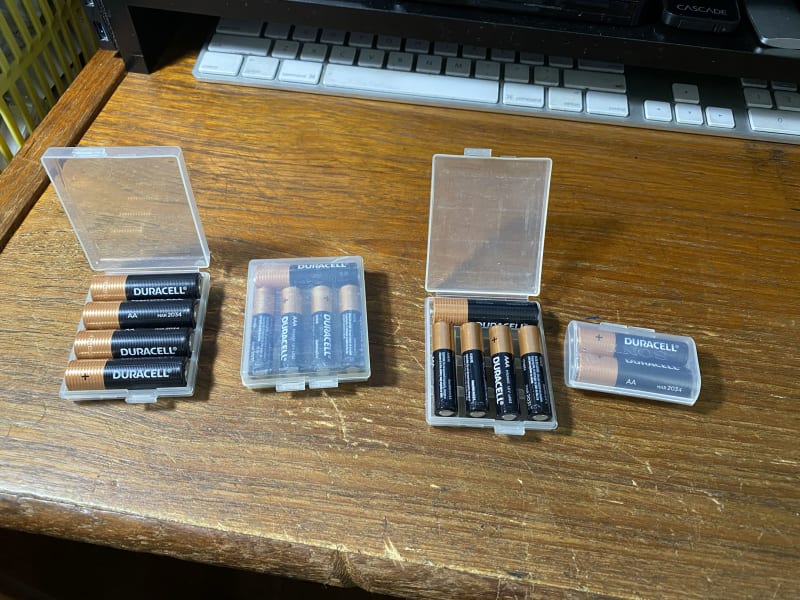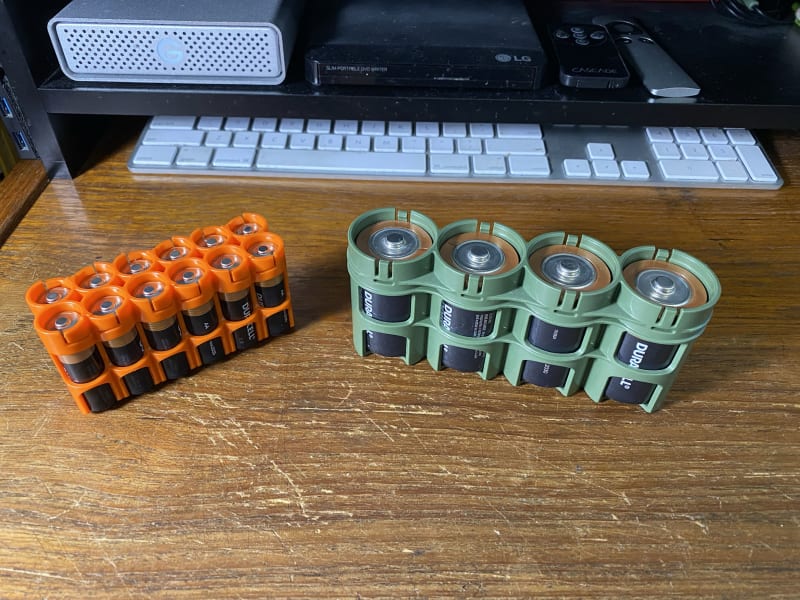My random thought about this...
My company placed these green trash cans at each of the major buildings at our facility.

I assume disposable batteries or lithium/other recyclable batteries can all be co-mingled. Two thoughts about this noble endeavor...
Aren't lithium batteries prone to spontaneous combustion... or are depleted/uncharged LI batteries very 'safe'??
Also, I can only image this waste can 1/3 full of batteries, weighing ~50+#... no handles... so it had better have a super tough, heavy duty, liner-bag... god help you if the bag tears.
Regards, Wil Taylor
o Trust - But Verify!
o For those who believe, no proof is required; for those who cannot believe, no proof is possible. [variation, Stuart Chase]
o Unfortunately, in science what You 'believe' is irrelevant. ["Orion", HBA forum]
o Only fools and charlatans know everything and understand everything." -Anton Chekhov
My company placed these green trash cans at each of the major buildings at our facility.

I assume disposable batteries or lithium/other recyclable batteries can all be co-mingled. Two thoughts about this noble endeavor...
Aren't lithium batteries prone to spontaneous combustion... or are depleted/uncharged LI batteries very 'safe'??
Also, I can only image this waste can 1/3 full of batteries, weighing ~50+#... no handles... so it had better have a super tough, heavy duty, liner-bag... god help you if the bag tears.
Regards, Wil Taylor
o Trust - But Verify!
o For those who believe, no proof is required; for those who cannot believe, no proof is possible. [variation, Stuart Chase]
o Unfortunately, in science what You 'believe' is irrelevant. ["Orion", HBA forum]
o Only fools and charlatans know everything and understand everything." -Anton Chekhov



![[banghead] [banghead] [banghead]](/data/assets/smilies/banghead.gif)